We’ve been consulting with organizations on innovation software and solutions for over a decade and commonly talk to companies interested in innovation strategies. These organizations typically have a goal of “being innovative” but don’t know how to put the groundwork in place or how to achieve big-picture goals.
That’s usually because innovation departments look at encouraging innovation as simply asking employees to share ideas that might be helpful to the business.
This approach seems effective when innovation departments see a higher volume of idea submissions and more involvement from employees, but it isn’t sustainable for a few reasons:
First, left to themselves, employees tend to submit ideas on anything or everything they feel could be helpful — most of which likely relate to their day-to-day work life. Few of these ideas will be related to the innovation department's or wider organization's current goals or initiatives.
On that note — innovation departments end up with a range of ideas and simply don’t have the resources to keep up with giving feedback or evaluating each one.
Finally, because many ideas are left untouched — employees submit ideas and never hear anything back — the motivation to continue participating dwindles. Employees stop lending their time to innovation efforts when there’s no open communication about what’s being done with their contributions.
This unstructured approach can lead to low employee engagement, or even frustration, yet many companies follow it. What’s needed is an organization-wide process to gather and vet ideas consistently. For this, you need full participation, which should include real incentives for contributing, not just a vague “you’re helping us become more efficient” type of message.
Below, we outline four best practices for encouraging innovation in your work environment — with the goal of cultivating a culture where everyone contributes to idea sharing (and feedback) to drive meaningful progress.
If you’re interested in learning more about InnovationCast, you can schedule a demo with us here.
1. Establish Clear Innovation Processes (So You Can Act on Ideas Quickly)
Before setting up a process (more on that below), you need to decide on an overarching innovation strategy since this is where you’ll derive the goals to guide innovation initiatives. We have a whole article on the topic, linked above, which walks you step-by-step through defining innovation goals as a prelude to setting up an organization-wide process.
However, many companies skip the strategy altogether and jump right into brainstorming sessions or idea submissions. We don't recommend this. Not stopping to think through strategy-level questions first risks:
Not knowing what you’re trying to achieve with innovation
Not knowing which priorities you want to collect ideas on
Not knowing what success looks like for an innovation program
We recommend first thinking through those questions and others discussed in our article above to understand where you want your innovation efforts to lead (i.e., defining goals), before soliciting ideas from employees.
Once you’ve defined your strategy, you set up a process to get you there. As mentioned earlier, a process is more than just gathering ideas — a point where many companies both begin and end their innovation efforts. Instead, a process encompasses a wide variety of activities for discussing, vetting, and testing ideas.
To be clear, an effective innovation process will have two main phases:
Idea collection and discussion: You should crowdsource ideation, and solicit these from as many team members as possible to incorporate as many perspectives and viewpoints as you can. You should also approach discussions and feedback with utmost transparency, giving everyone a voice and allowing them to see feedback on ideas and their progress.
Idea assessment and validation: After developing ideas through feedback and discussion, you need to determine their feasibility. For this, we recommend initiating a workflow for evaluating and testing ideas in stages.
Another reason we recommend using a structured innovation process is that planning and running a process gives a clear picture of the resources you’ll need, helping to steer their allocation toward your goals.
This avoids a common pitfall: asking for ideas on things like new products yet not having the budget to see them through, which again can have a demoralizing effect.
2. Use Innovation Management Software to Structure & Streamline Innovation Activities
In our experience, putting into practice an organization-wide innovation process using spreadsheets, SOPs, and survey forms can be challenging because of:
Limited transparency in idea submissions: Employees often don’t have a voice in vetting submitted ideas, nor do they (typically) see how or why ideas get accepted or rejected.
Shared documents quickly get disorganized and messy: If ideas aren’t meticulously tracked, they might be overlooked or forgotten.
Inefficient use of resources: Building a homegrown solution can require significant developer resources and take years to implement.
These are just a few of the issues that may arise when you have to govern innovation processes manually.
We built our innovation management software, InnovationCast, to solve those limitations (more on that story here). It’s a centralized hub that reflects best practices in innovation management that we’ve accumulated over years of working with corporate clients.
The platform brings everyone who participates in innovation (both employees and outside stakeholders) under one roof, effectively letting you crowdsource idea management.
It offers thoughtful idea collection, as well as transparency on all relevant activities so everyone has a chance to participate in discussions and shape ideas with their feedback.
It lets you design multiple workflows to validate ideas for market testing and acceptance. These workflows let you design processes to evaluate and test ideas before approving them for implementation.
It automates repetitive and time-consuming tasks such as sending notifications, tracking ideas, promoting ideas to successive workflow stages, and more.
It lets you manage each piece of the process or multiple frameworks in one tool — even portfolio management for tracking progress, outcomes, and the return on innovation.
Read more: How to Manage Your Company’s Innovation Process
3. Provide a Variety of Ways for Users to Get Involved
Contributors will have different skill sets — one of your employees might be great at thinking up new ideas, while another might be super at assessing and re-working concepts — so a successful innovation process should allow users to participate and collaborate in numerous ways, such as:
Responding to innovation challenges
Submitting original ideas
Leaving feedback on ideas
Sharing news articles and resources on topics of interest
Publish Challenges to Boost Participation
As we mentioned earlier, traditional idea submission often ends up generating a range of ideas, with many not really supporting the organization’s goals. A best practice we recommend is to publish Challenges, rather than just soliciting ideas on different topics.
InnovationCast lets you post Challenges, which are issues relating to the business strategy or innovation goals. When others see your Challenge, they’ll submit new ideas to participate in the problem-solving, and they must do so by a deadline.
Challenges and ideas typically generate discussion and feedback; the best ideas are vetted and selected for the evaluation phase.
This allows you, with the help of the community, to vet the best ideas to solve the Challenge.

Allow Employees to Submit Ideas at Any Time
Running Challenges for idea submission has its advantages, but you should also let employees submit ideas when creative thinking strikes. This broadens participation as it shows employees you’re open to and want to hear their opinions, and it allows employees to share ideas when convenient for them, rather than waiting for a specific challenge or prompt.
One way to let employees freely submit their ideas is to make available pointed idea submission forms, which are structured questionnaires guiding users to ensure ideas are immediately relevant and thoughtfully considered.
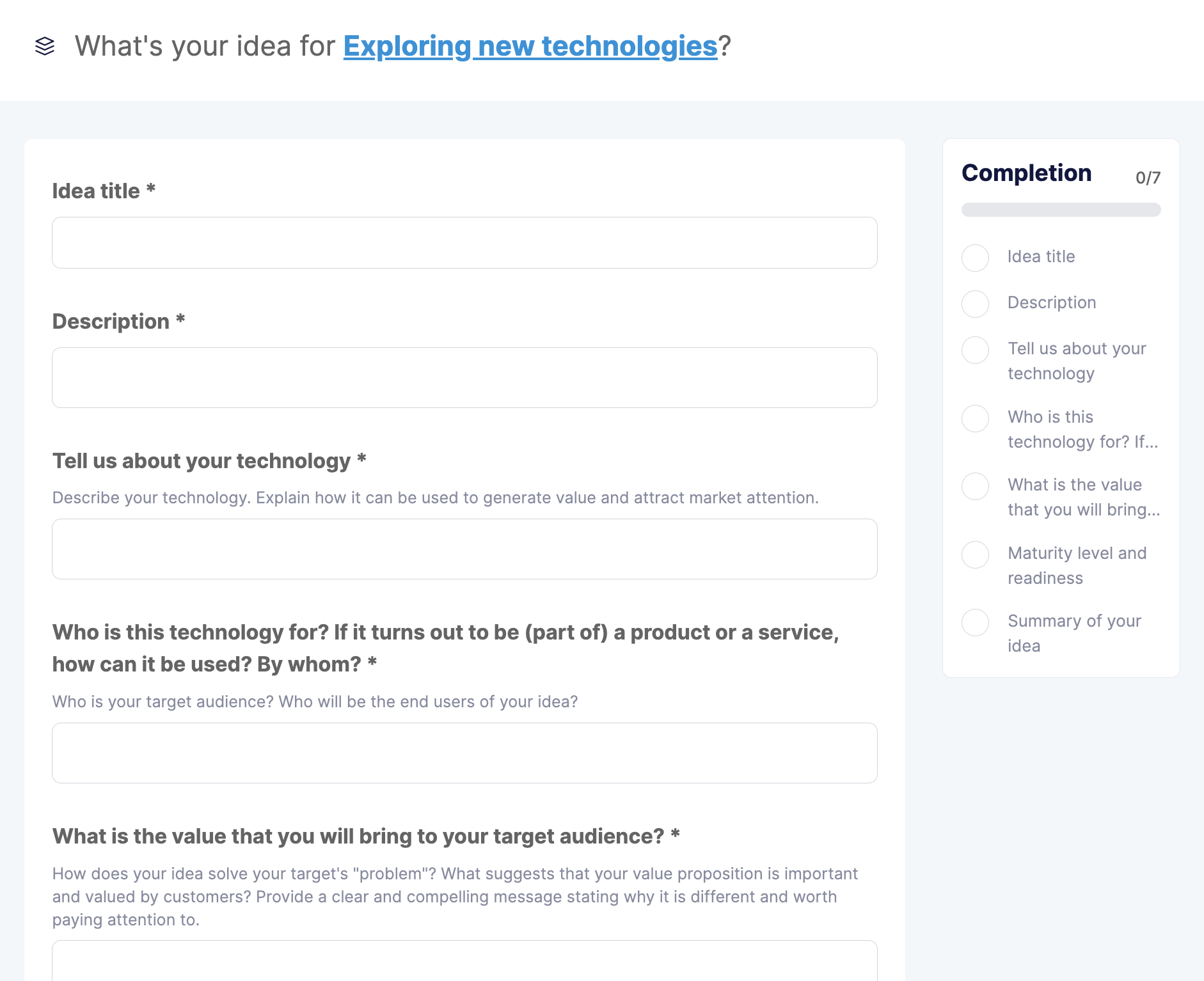
InnovationCast’s “Always-On” idea submission forms offer this. Managers can customize these forms to filter ideas and prompt employees to share more details about the submissions. For example, you can establish accepted categories of ideas that relate to your high-level goals, and then guide your employees as they submit their ideas. If it doesn’t fit, they can’t submit.
This minimizes the volume of irrelevant ideas compared to using a suggestion box, and allows the organization to receive a constant stream of ideas and new solutions related to big-picture goals without relying solely on Challenges.
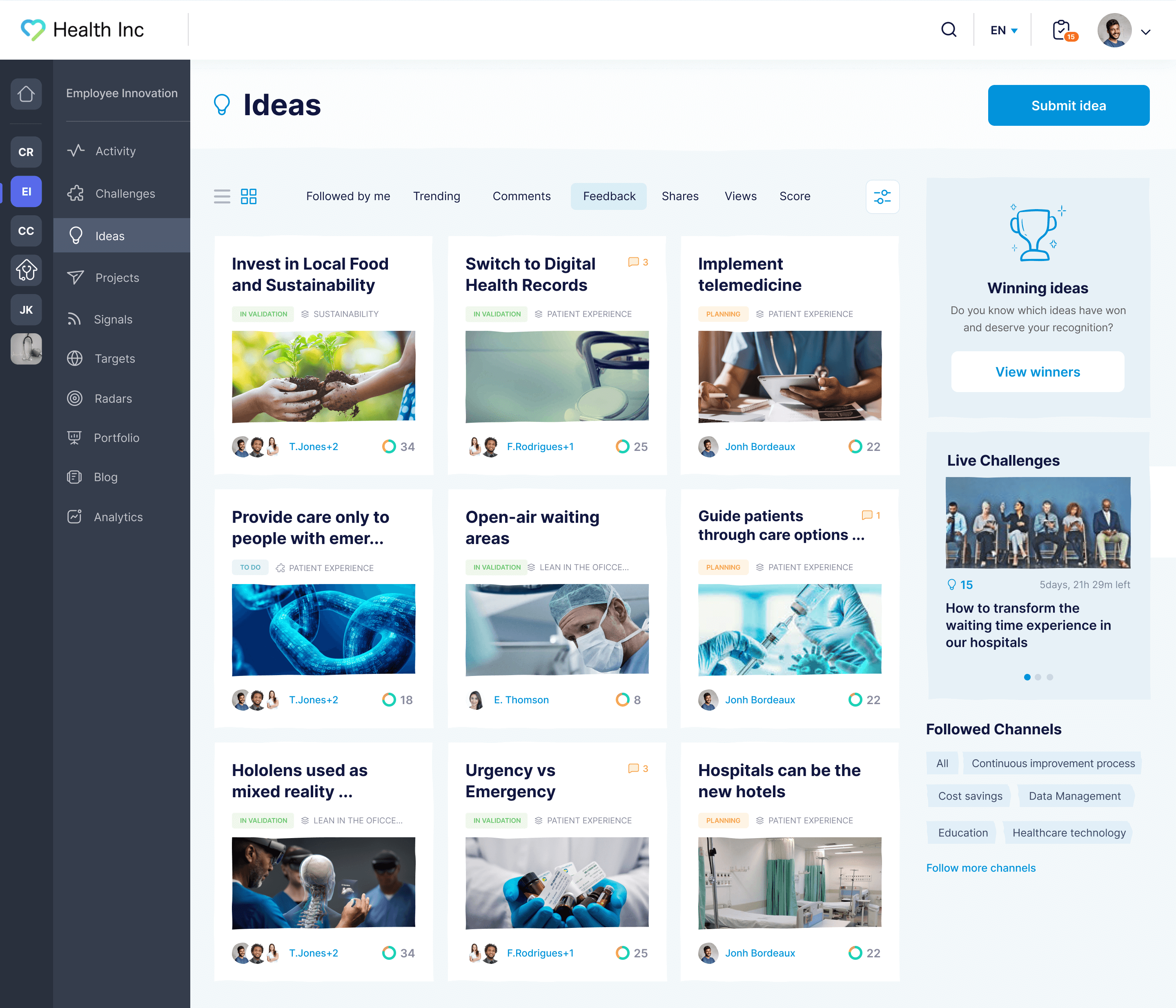
Ask Employees to Be Your Eyes & Ears
Rather than submit ideas, employees can also share and discuss news articles about defined areas of interest or a new approach by using the platform’s Signals feature (also known as “Distributed Scouting”).
Examples of such items are updates about new technologies, market trends, or news about innovative companies and startups, to eventually inspire ideas that get submitted in the future.
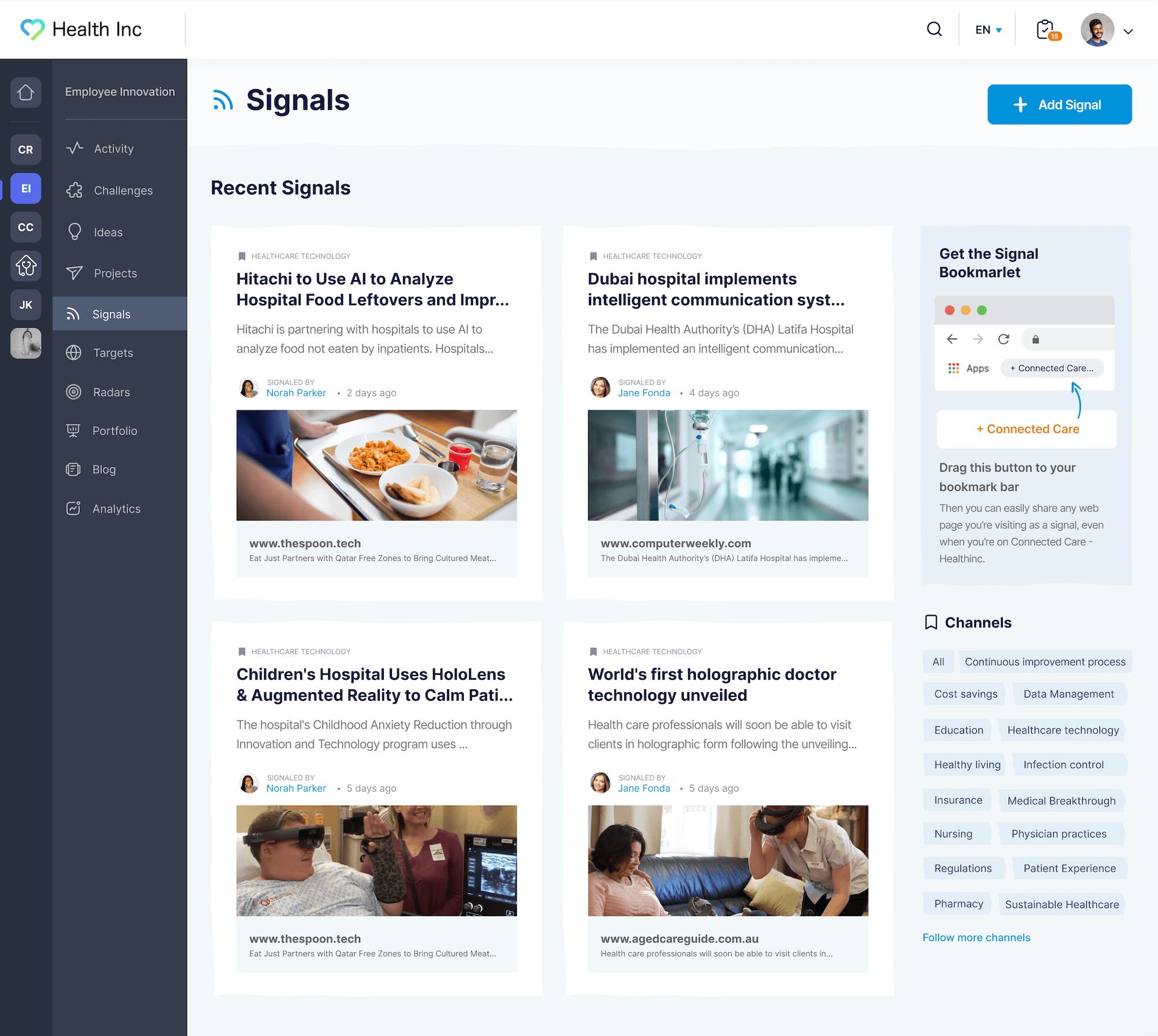
When posting an item in Signals, users are asked to bucket the resource into a charted area of interest and give more details about the article so others can quickly understand its importance before clicking to read the whole story.
Having to categorize items in such a way also filters out non-relevant content, much as the structured forms of Always-On Idea Submission do.
Facilitate Constructive Criticism & Productive Conversations
Without active and ongoing discussion about ideas among your employee base, innovation initiatives tend to stagnate. You should try to solicit detailed input where possible (rather than using a simple yes or no voting system) and have employees explain the why for their particular commentary to move the discussion forward more efficiently.
Such details are what shapes the idea into something actionable. Feedback not only highlights potential flaws or areas for improvement but also uncovers new angles and opportunities. Encouraging employees to articulate the reasoning behind their feedback also engages them and pushes the conversation beyond surface-level observations.
Two ways that InnovationCast allows users to leave feedback are by:
Voting and explaining the reason for your vote. Three buttons are provided to users to vote on an idea: “Looks great,” “I have questions,” and “Needs work.” When a user clicks on “Looks great,” then further details aren’t solicited, but when they click on “Needs work,” or “I have questions” they’re prompted to give a reason why and the author is notified. Authors can respond to questions or comments, create new discussion threads, or edit their ideas.
Commenting in discussion threads associated with an idea. To facilitate engagement, the platform allows an idea author to mark particularly helpful comments as “Significant Contributions.” This provides recognition to the commenter and motivates participants to give thoughtful and beneficial suggestions. It also refines ideas by highlighting potential weaknesses and ways to improve.
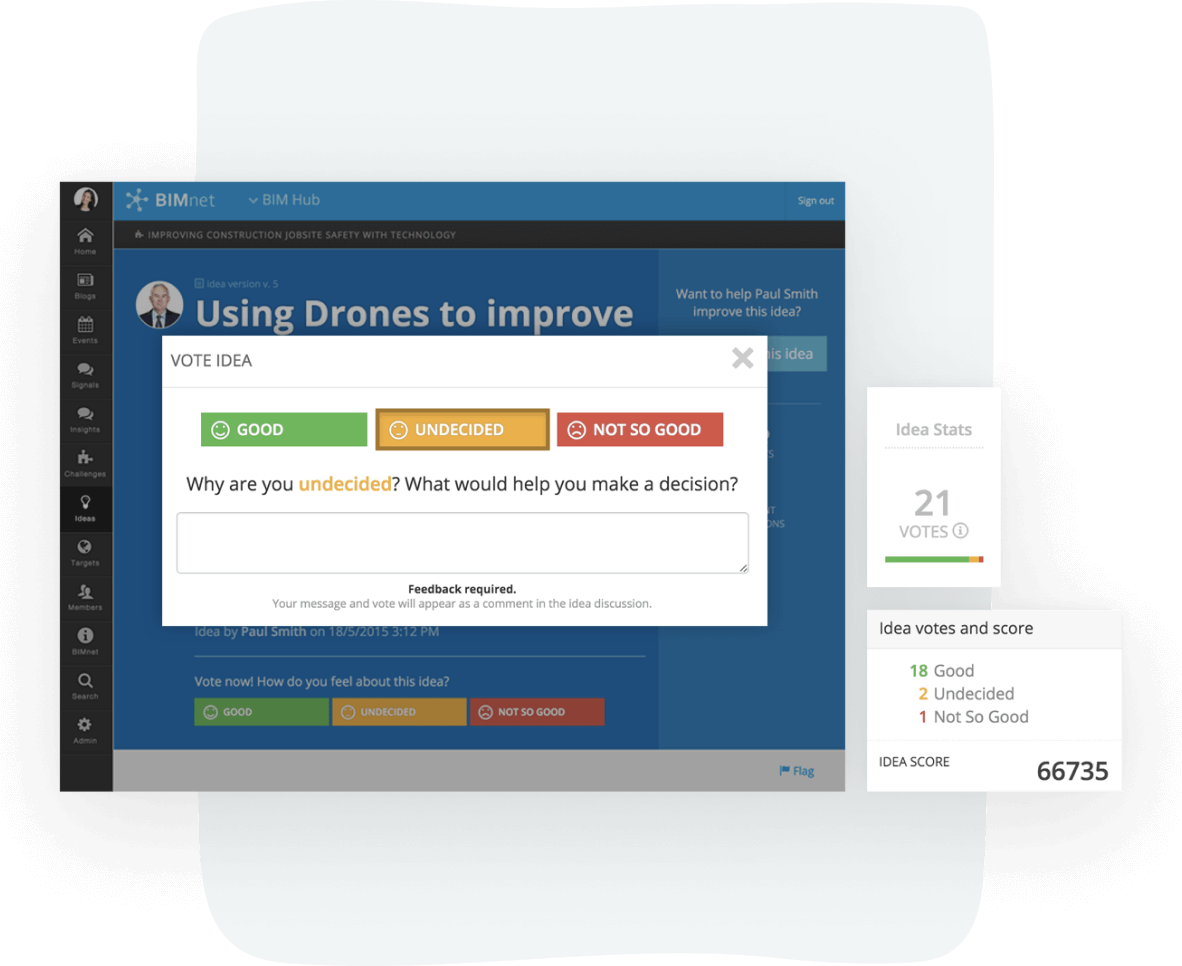
Read more: How to Build an Organization-Wide Employee Innovation Program
4. Grant Visibility & Encourage Collaboration Through the Entire Innovation Process
We recommend making your process open and transparent to all as a way to build collaboration and trust in your innovation efforts.
You do this by giving employees visibility into all submitted ideas — and allowing them to participate in the discussions that shape those ideas. This not only keeps them engaged, but also allows them to monitor the outcomes of their contributions.
You can encourage collaboration by incentivizing employees’ contributions. Here, we don’t mean rewarding activity as a means of incentivizing innovation efforts, like giving employees rewards just for submitting ideas. Employees can game this tactic by putting forward numerous innovative ideas, which tends to reward quantity rather than quality.
You can incentivize employees’ contributions rather by providing both a tangible reward — like a bonus or prize — and organization-wide recognition.
Recognition makes employees feel valued and appreciated, and seeing others’ wins encourages healthy competition and teamwork as part of workplace culture. This also means you get the dual benefits of individual achievement and collective progress.
InnovationCast provides several ways to recognize individual contributions:
You can design and award badges, which are like public shout-outs, for achieving certain milestones. These are displayed prominently in users’ profiles. For example, a user whose feedback in discussions has been marked as a “Significant Contribution” ten times might earn a badge.
You can implement a points system where employees get points for completing certain tasks well. When they have enough points, they can redeem them on the platform for specific rewards, such as extra time off, a free lunch, gift cards, or other cool perks.
You can publicly acknowledge an individual’s efforts in a newsletter, telling the story of the innovation project and how innovative thinking evolved into reality; this highlights the efforts of those involved in projects, and the learnings can inspire others on how to get involved. (You can actually design and send newsletters to your user base from InnovationCast!)
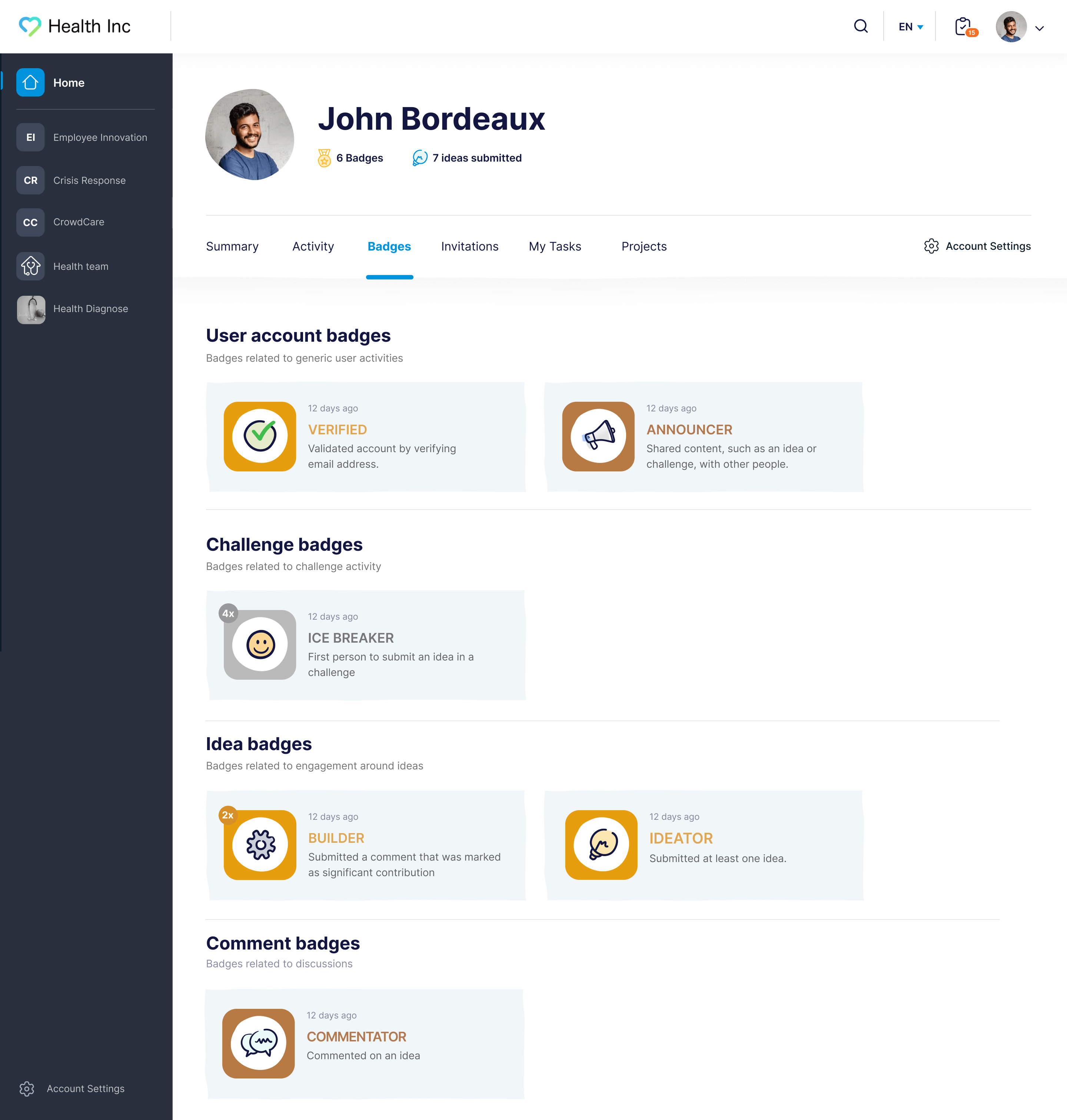
Publicly recognizing individual contributors promotes a culture of innovation by tapping into social reinforcement and motivation, especially when offered alongside more tangible rewards.
Next Steps
Keeping employees consistently motivated to participate in workplace innovation efforts can be challenging. That’s why companies like DHL and Novo Nordisk trust InnovationCast to support a well-oiled, organization-wide innovation process.
Our software promotes collaboration in your company culture and across your entire employee base to ensure continuing engagement, transparency, and recognition.
To see how InnovationCast helps you encourage innovation in the workplace, schedule a free demo & consultation.

